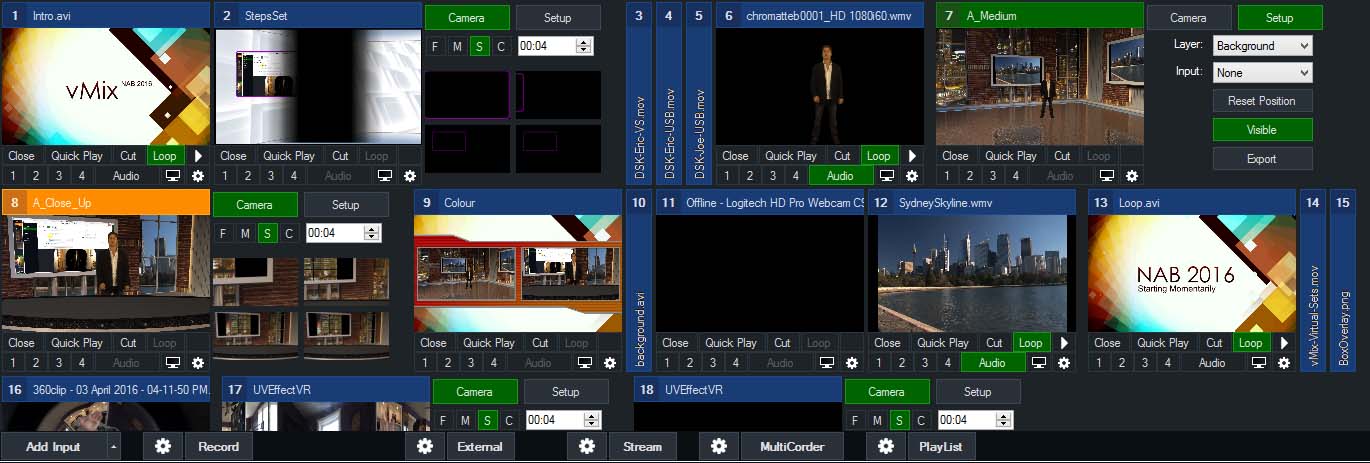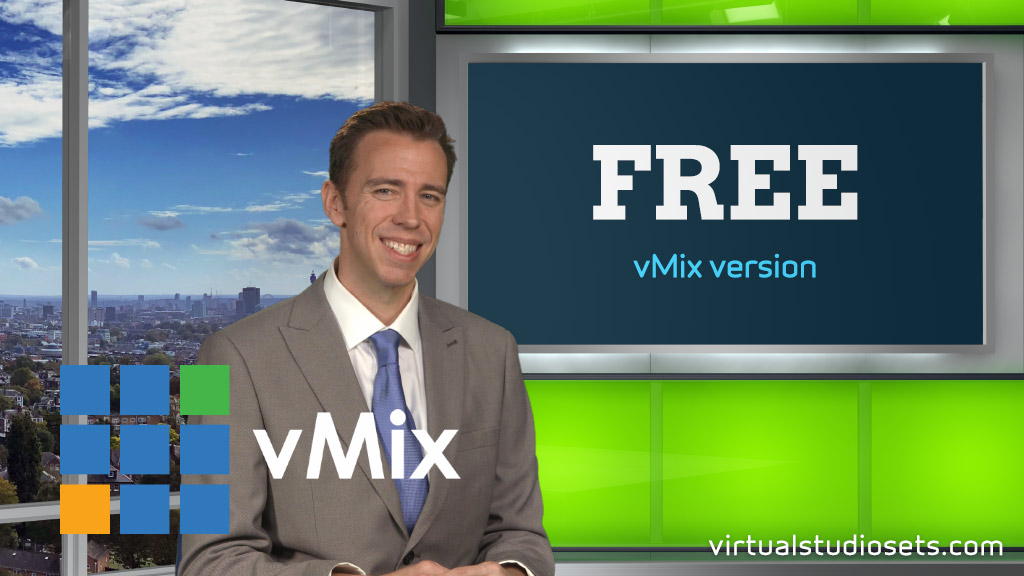With that in mind, custom virtual sets simply involve creating your own 3d images elsewhere and importing them as standard 2D PNGs or JPGs within vMix as an image input. Then you can add the 'Blank10' Virtual Set template built into vMix and assign those graphics to one of the 10 available layers and build the virtual set from there.
Vmix virtual set Complete multi-angle virtual set for green screen use.Ready-made vMix versions with everything you need (including config.xml file) in its own folder. Stylish contemporary virtual studio set, ideally suited to News, Current Affairs and Sport shows. The studio set has plasma screens,to use your own footage. Virtual Set Editor is designed for use with TriCaster 8000, 860, 460, 410, and Mini, which support custom virtual sets, shot presets, holographic virtual sets and animation store transitions. It is also compatible with TriCaster 40 and legacy XD models, although you may encounter limitations with select features and capabilities. Drag and drop integration. Just add the green screen! High Definition – Most background files are 3000x2000px (Minimum of 1280×720) Customized configuration files for vMix included; Effortlessly import layered photoshop files for easy use with NewTek TriCaster in the NewTek Virtual Set Editor. You can also set multi-view options, set up action triggers, control tally lights, and even remotely operate PTZ cameras. Once you have added a camera, you can go ahead and add additional sources following the same steps.
|
|
Vmix Virtual Studio

- Angle 1:
- - 1.Wide shot x1
- - 2.Medium shot x2
- - 3.Close-up shot x1
- Angle 2:
- - 2.Medium shot x2
- - 3.Close-up shot x2
- Background.psd:
- - LCD layer(Alpha) x2
- - Logo layer(Alpha) x2
- - Light layer(Alpha) x16
- - Background layer
- 1. Easy to customize the light-box color;
- 2. Real floor reflection;
- 3. The push-pull shots still maintains high-definition picture quality; (Source png file resolution: 4K)
- 4. Rich shot presets to meet basic needs.
- 1. Can be adjustable light-box color in Photoshop;
- 2. Can be add with your Logo / LCD in Photoshop;
- 3. Can be modify your anchor position / size in vMix;
- 4. Can be replaced with your anchor / screen video in vMix;
- The Anchor and Screen content from the image preview are not included, you can find them here:
|
|
|
|
|
|
What is vMix?
vMixis a software vision mixer available for the Windows operating system and we’ll see how to use vMix for streaming. vMix is developed by StudioCoast PTY LTD. Like most vision mixing software, it allows users to switch inputs, mix audio, record outputs, and live stream cameras, video files, audio, and more, in resolutions of up to 4K. It can stream up to three destinations at one time. You can do RTMP stream with vMix and watch WebRTC from Ant Media Server.
Let’s see how to use vMix for streaming.
How to use vMix?
vMix is available for Windows only because it is using Direct3D which is exclusively available for Windows. Before learning how to use vMix, you need to install vMix on your computer. Click this link to download the trial version. Then go through installation by double-clicking the installation file.
Vmix Virtual Input
If you want to run it on Mac, you can do that by installing Windows on a separate partition on your system. This is not running on MacOS, but this is what is suggested by the provider of vMix.
1. Provide Sources
Click the add input button and add some input for the broadcast. As an example, I will be adding a display input.
As you can see my input has been added successfully and its preview can be seen.
But you can do much more with vMix. If you add more than one input, then you can stream more than one stream at a time. Every input has its own destination, so it makes it easier to stream multiple contents with vMix.
2. Configure vMix
- Click to the gear icon near the stream button on the bottom
- Choose
custom RTMP Serverin destination. - In the URL box, type your RTMP URL without stream id. It’s like
rtmp://your_server_domain_name/LiveApp/ - In the Stream key, you can write any stream id because we assume that no security option is enabled.
- If token is enabled you need to add
?token={yourtokenhere}. So it would be like{streamid}?token={yourtokenhere}
- If token is enabled you need to add
3. Tuning
You can use predefined settings but if you click to the gear button next to the quality options, you can tinker with the options.

- Profile should be
baselineandkeyframe latencyshould be1.- You can set
keyframe latencyto 2 according to network. You can experiment this.
- You can set
- You can set your
leveland yourpresetaccording to your configuration but3.1andmedium presetis good enough for having good quality streams.Presetsthat slower than medium preset puts immense load on the cpu. So, beware of that. Also you get diminishing returns from settings slowerpresetthan medium.
- You can enable the
hardware encoderfor using yourGPUin theencoding process.- Medium preset cpu encoding most probably would have better video quality but it depends on the gpu architecture that you are using. If you are using last generation gpus, your video quality would be close to the CPU’s medium
presetif not better.
- Medium preset cpu encoding most probably would have better video quality but it depends on the gpu architecture that you are using. If you are using last generation gpus, your video quality would be close to the CPU’s medium
4. Start Streaming
After configuring the server and tuning the encoder according to your needs and, you can start the streaming by clicking the stream button at the bottom of the vMix dashboard.
As you can see from the following screenshot, it started to streaming.

And you are publishing withvMix!
You can checkhttps://www.vmix.com/support/training-videos.aspxto get better in vMix.
We tried to explain how to use vMix and we hope this tutorial helped you to get online with vMix.
You have more options for publishing in RTMP. Please check our other guides for publishing in RTMP:

Virtual Sets For Vmix
If you have any questions, don’t hesitate to contact us.